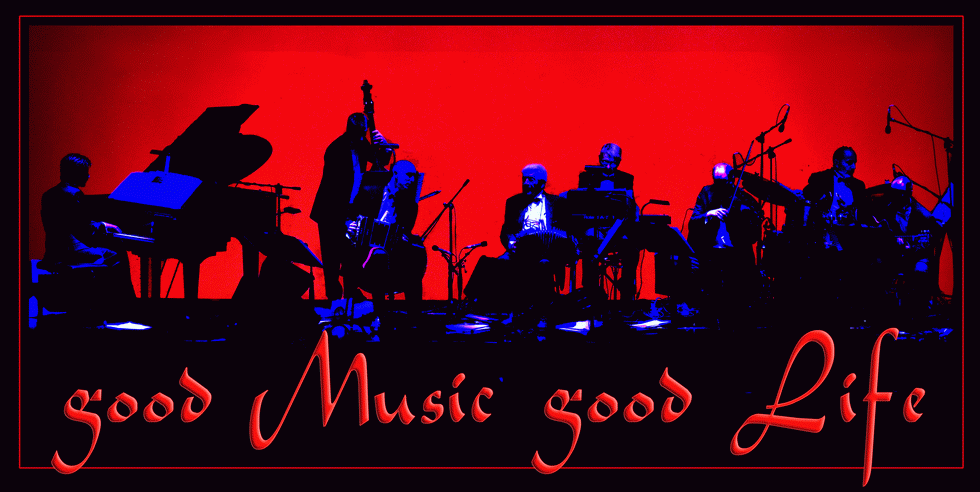There's the
"Synaphaï" in the Wonderful World of Music of Iannis Xenakis, . It's
a kind of concert (1969) for the piano
and the orchestra, with shared roles ...
equally shared to the piano and other instruments of the orchestra. And surely indeed, it allows the piano, highlighting its power,
to balance the families of orchestral groups and the complicated playing of percussion instruments. It is played even
in Japan !!!!
We highly recommend it.
[Translation: Mary Grammatikaki]
[Translation: Mary Grammatikaki]
Γιάννης Ξενάκης-Synaphaï
Στον υπέροχο μουσικό κόσμο του Ιάννη Ξενάκη, υπάρχει το "Synaphaï". Ένα είδος κοντσέρτου (1969) για πιάνο και ορχήστρα, με μοιρασμένους τους ρόλους ... ισότιμα, στο πιάνο και στα άλλα όργανα της ορχήστρας. Και μάλιστα, δίνει τη δυνατότητα στο πιάνο, προβάλλοντας αρκετή δύναμη, να εξισορροπήσει τις οικογένειες των ορχηστρικών ομάδων και τα περίπλοκα ''παιχνίδια'' κρουστών. Το παίζουν ακόμα και στην Ιαπωνία!!!!
Σας το προτείνω.
Synaphaï
Synaphaï, for
piano & 86 musicians, written in 1969.
The Royan
Festival, located in the west of France just north of Bordeaux, and dedicated
primarily to new music, began in 1964 and continued for several years until it
was supplanted by other venues. Between 1966 and 1971, Iannis Xenakis was a
regular guest at the festival, and he composed three quite remarkable
orchestral scores to be premiered there. Synaphaï, the last of these, was
written in 1969 but not performed until the 1971 festival. This piece also
happens to be his first in the concerto genre. It is not, however, a
traditional virtuoso showpiece. The solo piano is certainly featured, and the
music is fiercely difficult, as one would expect, but the composer's approach
is to treat the piano as a voice of equal weight with the other orchestral
sections. The fact that it is out front, and that there is only one player
rather than a whole section, does tend to draw the spotlight toward the
pianist, but the music itself is built from interwoven strands rather than a
narrative featuring the soloist in the first person or a dramatic dialogue
pitting piano against orchestra. Carrying on, but retreating somewhat, from the
unusual spatial placement of the musicians in his two earlier works,
Terretektorh and Nomos Gamma, which scatter the players amongst the audience,
Synaphaï mixes the players up, but keeps them all on the stage. The piano is
placed down in front, no doubt for the practical reason that that is the best
place for it to be in order to be heard. (Besides, hard-working soloists do not
want to be stuck off in the back somewhere!)
The title
means "connexities," and Xenakis makes use of this notion by trying
to get the pianist to play in as smooth a manner as possible, to sound, in
other words, like a wind or string instrument. He complicates the business by
giving the player as many as ten lines to play at once. Set against that are
"dry" or "hard" elements, adding rhythmic drive to the
music. The piece proceeds in a continuous fashion--there are no movements--with
the liquid piano textures overlapping those of the winds and strings. Later on,
static elements (grinding string sounds, rearticulated pitches in the brass)
are set in juxtaposition against the more directional, flowing music of the
piano. It is only at the very end that the percussion enters, finishing the
piece off with a dramatic drum roll, a similar, though much compressed, gesture
to the conclusion of Nomos Gamma. The ability of the piano to project enough
power to balance the families of orchestral groups, and its capacity for
playing both dense, intricate as well as percussive, rhythmic material made it
an ideal instrument for Xenakis's first foray into the concerto realm. He
would, in fact, compose two more piano concertos over the next two decades, and
only after that would he venture beyond to other instruments.
Official Website HERE
Wikipedia HERE
Βικιπαίδεια (βιογραφία) ΕΔΩ
Official Website HERE
Wikipedia HERE
Βικιπαίδεια (βιογραφία) ΕΔΩ



